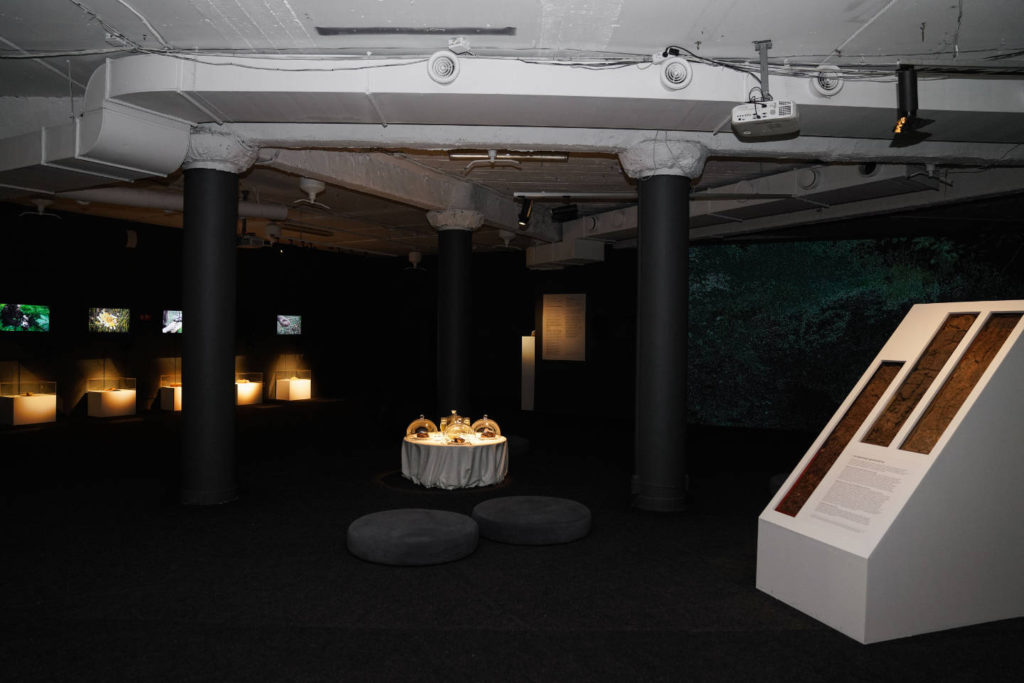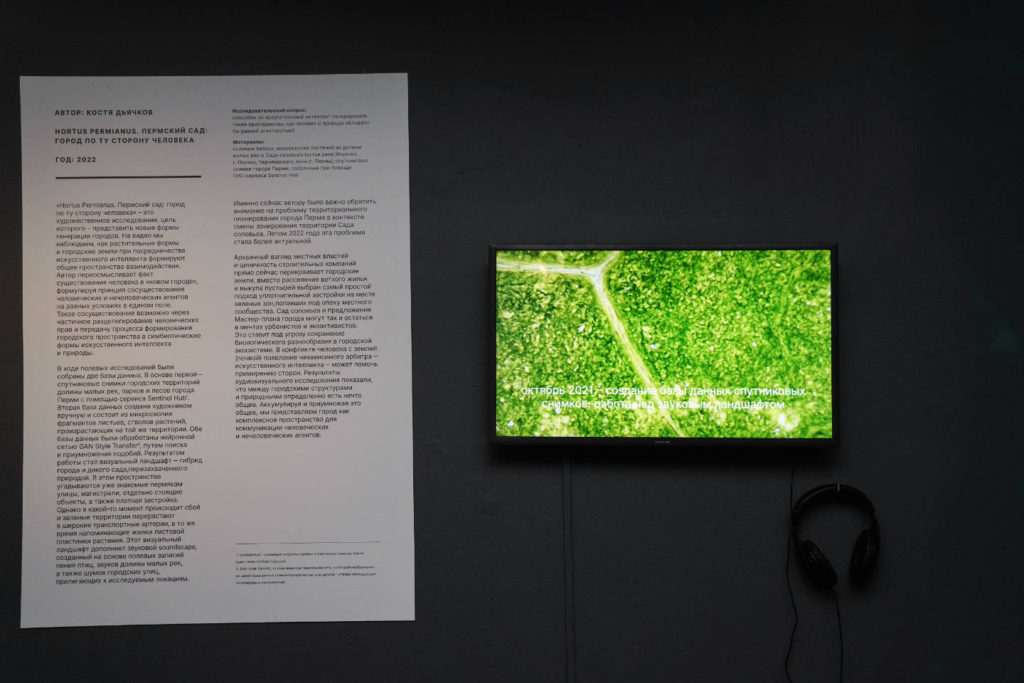art work title:
Hortus Permianus: Perm post-anthropocene Garden
date of creation:
june 2021 – june 2022
expo:
Museum of Contemporary Art “PERMM” , Perm, Russia, 2022
Research question:
Is AI capable of generating such spaces where human and nature would have equal agency (concept by Gilles Deleuze)?
Idea:
«Hortus Permianus. Perm post-anthropocene Garden»
KD
– is an artistic research that aims to present new forms of city generation. We observe how plant forms and urban lands, through the mediation of artificial intelligence, are forming a common space, a space of coliving.
Techniques:
This visual landscape is complemented by a soundscape created from field recordings of birdsong, shallow river valley sounds, and city street noises presented to explicit locations.
Materials:
- field recordings,
- microscopy of plants from the valley of small rivers and the Sad soloviev (the mouth of the Ilyinka River, Perm), Chernyaevsky Forest (Perm);
- satellite images of the city of Perm, collected using the Sentinel hub GIS service.
Tiser:
Exposition:
The author rethinks a fact of human existence in the «new city», formulating the principle of coexistence of human and non-human agents on equal terms in a single space. Such coexistence is possible through the partial separation of human rights and the transfer of the process of urban space formation into symbiotic forms of artificial intelligence and nature.
During the fieldwork, two databases were collected. The first one is based on satellite images of urban areas of the valley of small rivers, parks and forests of the city of Perm using the Sentinel Hub service.
The second database was created by the artist manually and consists of microscopy of fragments of leaves, stems of plants growing in the same area.
Both databases were processed by the GAN Style Transfer neural network by searching and multiplying similarities.
The result of the work was a visual landscape – a hybrid of a city and a wild garden, recaptured by nature. In this space, streets, highways, free-standing objects, as well as dense buildings are guessed.
However, a failure occurs and green areas develop into wide transport arteries, at the same time resembling the veins of a leaf blade of a plant.
The Sad soloviev and the proposals of the City Master Plan may remain in the dreams of urbanists and eco-activists. This threatens the biological diversity in the urban ecosystem.
In the conflict between human and the nature, the emergence of an independent arbiter (artificial intelligence) can help reconcile the parties. The results of the artistic research showed that there is definitely something in common between urban structures and natural ones.
Accumulating and multiplying this common, we present the city as a complex space for the communication of human and non-human agents.


“Permian Garden” was produced with the financial support of NORPEXAL Foundation.
Art-director: Nailya Allahverdieva
Curator: Marina Pugina
Exhibition designer: Olga Golub
more info: